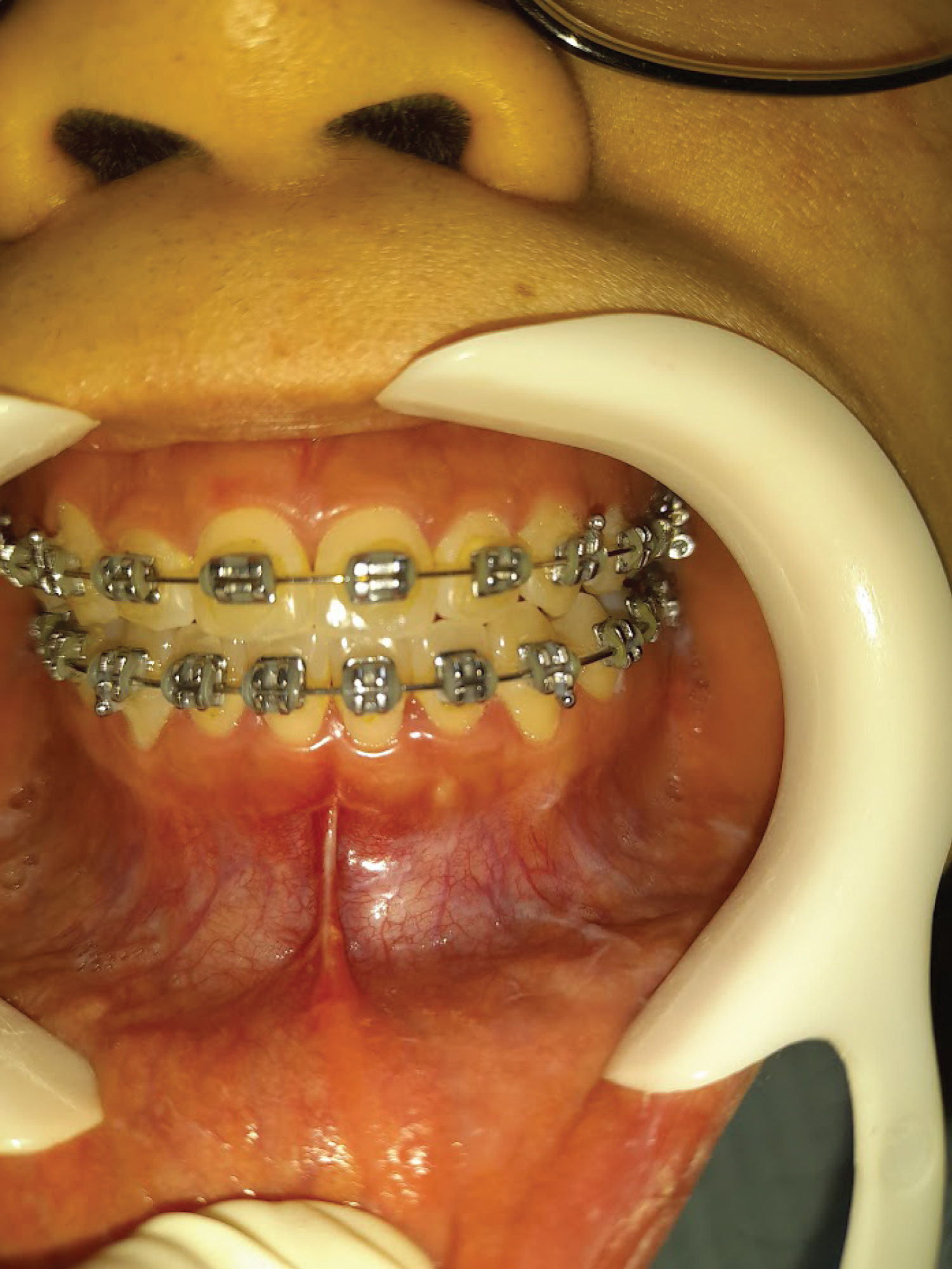A Novel Method of Mentoplasty with Intraoral Vertical Incision (Labial Frenum)
Abstract
Mental nerve damage can result in variable quality of life impairment in patients undergoing surgical mentoplasty, especially in orthognathic surgery patients. This complication is related to the mucosal and transmuscular surgical access generated by the horizontal incision in the chin. To minimize this type of disturbance, a vertical incision is used in the inferior labial frenum in a total flap up to the periosteum.
Keywords
Chin, Mentoplasty, Genioplasty, Orthognathic surgery
Text
Mentoplasty/Chin repositioning is a refinement in orthognathic surgery and enhances the aesthetic balance of the face. The traditional surgical approach is the horizontal incision in the lower labial groove and variations involving muscles and periosteal flap elevation [1,2]. This surgical procedure may cause neuro-sensory disturbance in the mentonian [3] and the endings of the n milohyoid [4]. The use of a vertical access directly over the inferior labial frenum is reported (Figure 1) and detachment of the mucoperiosteal flap up to the mental foramen (Figure 2). After exposing the surgical field, the other steps of the genioplasty are those conventionally described and can be found in text books [5]. The repair is uneventfull (Figure 3 and Figure 4). This type of access greatly reduces the risk of injury to the nerve. It is also used in autogenous chin graft harvesting and for the extraction of an impacted mandibular canine.
References
- Han X, Chen X, Ji D, et al. (2022) A novel method of chin augmentation with improved intraoral horizontal middle incision. Arch Med Sci 18: 1718-1722.
- Lee EI (2013) Aesthetic alteration of the chin. Semin Plast Surg 27: 155-160.
- García Y Sánchez JM, Gómez Rodríguez CL, Gradias Caballero DA, et al. (2022) Basal extended mentoplasty. J Maxillofac Oral Surg 21: 747-758.
- Guyot L, Layoun W, Richard O, et al. (2002) Alteration of chin sensibility due to damage of the cutaneous branch of the mylohyoid nerve during genioplasty. J Oral Maxillofac Surg 60: 1371-1373.
- Posnick JC (2000) Aesthetic alteration of the chin: Evaluation and surgery. In: Posnick JC, Craniofacial and maxillofacial surgery in children and young adults. Philadelphia, PA: WB Saunders 43: 1113-1124.
Corresponding Author
Elio H Shinohara, Department of Oral and Maxillofacial Surgery, Hospital Regional de Osasco SUS/SP, Special Oral Surgery Clinic, São Paulo, Brazil.
Copyright
© 2023 Shinohara EH, et al. This is an open-access article distributed under the terms of the Creative Commons Attribution License, which permits unrestricted use, distribution, and reproduction in any medium, provided the original author and source are credited.








